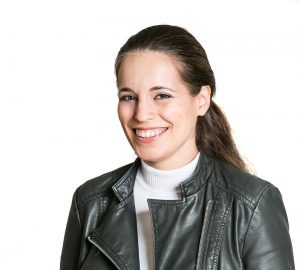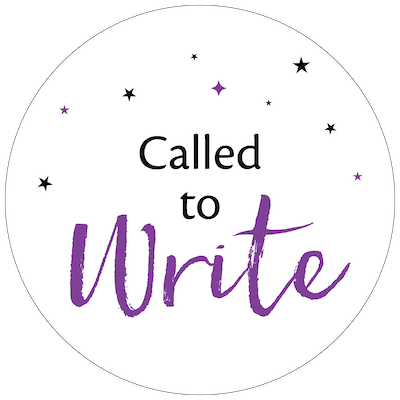Today I’m pleased to welcome Marina Darlow of the Systems Meet Humanity podcast as a guest expert.
My interview with Marina on her podcast just came online this week and I encourage you to check it out. We had a terrific conversation about systems and writing, including working in small chunks, how emotions can be “signposts,” and more.
You can check out our interview on the podcast here: http://vision-framework.com/podcast/jenna-avery
Marina is a systems expert who focuses on helping people be more productive by putting workable, human systems into place. I invited her to write about how to help make work actually happen for us here.
Enjoy!
![]()
4 Steps to Making Stuff Actually Happen, Part I
by Marina Darlow
 First, thanks, Jenna for bringing me to be a guest on your wonderful blog.
First, thanks, Jenna for bringing me to be a guest on your wonderful blog.
As a systems geek with a penchant for implementation coaching for creatives, I love to write about making stuff actually happen.
I’ve noticed that people love setting goals, even making plans, but when it comes to implementing, never mind doing it consistently, from week to week… then we have a problem.
So let’s talk about the real, tangible implementation of the tasks currently residing on your plate. And, hopefully, on your calendar.
There are four stages to each task:
- Choosing – deciding which task to start NOW.
- Starting – starting is often the hardest thing to do.
- Staying on Task – keeping focus and fending off distractions.
- Finishing – knowing where you draw the line in the sand and consider something finished.
This two-part series will help you glide through each of these phases, from decision to completion. Today we’ll start with Choosing and Starting.
Part I: Choosing What To Do and Starting the Task You Chose
What, in your opinion, are the biggest barriers to execution?
In my experience it’s the trio below. I wonder if you can relate:
- The all-or-nothing approach.
- Time-blindness, or as a client of mine once said “What do you mean what’s my timeline? I have “now” and “not now.”
- Trouble with transitions.
If we don’t address this unholy trinity, it can cause a lot of damage: by making you feel “always behind,” getting in the way of making decisions, leaving you overwhelmed, and working yourself to the point of acute burnout. As Jenna mentions in our interview, visionaries are particularly prone to overwhelm. They’re able to imagine the result very clearly, and therefore they can see the gap between “here” and “there” in all its mind-boggling glory.
So how do we overcome these obstacles?
The first step is to dig deeper into the Anatomy of the Task: what it’s made of, where the implementation breakdowns tend to happen, and how to address each scenario.
As I mentioned before, each task has four phases:
- Choosing
- Starting
- Staying on Task
- Finishing
Today we’ll look at the first two phases:
Phase 1. Choosing a Task
Last year I did a large round of interviews as research for a course I run. “Setting priorities” came up as one of the four top challenges my interviewees mention. No wonder – this is where both “all-or-nothing” approach and time-blindness come to mess with your head.
You want to do All The Things, and you’re at loss how long will it take.
If you read Jenna’s blog, or better yet, work with her, I’m going to assume you already have a plan and even that you’ve broken it down into small chunks.
You might even have a calendar that tells you what you’re supposed to do this afternoon at 2 p.m.
Even it’s not an exact task, your choices are now blessedly limited. This is will make your life much, much easier.
However, you might still have two to three options to choose from. What do you do, if no obvious choice presents itself? (Obvious could mean a looming deadline, an especially exciting task, or a task you’ve been prompted to do with someone else. It can also be just an easy decision for whatever reason.)
What do you do if you still struggle to choose?
Here are two good possibilities:
- Choose randomly. Flip a coin, if you wish. Any decision is better than no decision.
- Make a good enough decision. For the perfectionists among us – making a “good enough” decision is a huge step forward.
Here’s some surprising motivation: making a decision stimulates the pleasure centers of the brain, increasing dopamine activity.*
In a fascinating experiment, two rats are given cocaine. Rat A had to pull a lever to receive an injection. Rat B didn’t have to do anything, it just hangs out there. Guess which rat gets a bigger boost of dopamine? That’s right, the lever-pulling Rat A.
An active choice creates a change in the brain circuitry responsible for attention, and in how we feel about the action we chose. We choose –> we get dopamine. If we just hang out, like our friend Rat B, we get little to no increase in pleasure.
So make that decision. You’ll feel warmer and fuzzier.
Phase 2. Starting a Task
You’ve chosen a task? Great! Let’s start.
Hmmm… easier said than done. You should’ve seen me shuffling around the house, sitting down, staring at the screen, opening and closing the browser, anything to delay the start of writing this very post. Starting a task, especially if it’s something big or important can be daunting.
Here’s a tactic I’d like to share: the 20 second rule. It was developed by Shawn Achor to build better habits, but I found that the concept works just as well for starting a task.
“I like to refer to this as the 20-Second Rule, because lowering the barrier to change by just 20 seconds was all it took to help me form a new life habit.” ~ Shawn Achor
The idea is to reduce the barrier to a desired behavior. He coined this rule by moving his guitar from the closet to the middle of his room – right next to him instead of just 20 seconds away. “Three weeks later,” he says, “I looked up at a habit grid with 21 proud check marks.”
The task in question can be a part of forming a habit, or a one-time undertaking. Either way, starting a task requires “activation energy,” and our job is to reduce it to minimum.
How?
- Adapt your environment and design a ritual. If the task in question is something you do often, like writing, editing, or putting books in order, the best way is to adapt your environment and design a ritual. For example, I start most of my writing sessions by talking into a mic. (Voice typing is a fantastic invention!) So I always have my microphone next to my laptop. However, I only plug it in before a recording session. The ritual of plugging the cord into the port signals to me that I’m about to start recording.
- Start with the tiniest action. If the task is a completely new, or unusual, or just happens rarely, start with the tiniest action. Really small. No, even smaller. You’ll gain momentum. Remember, no “all-or-nothing.” Small, incremental steps are the way. If you’ve decided to clean your new office, start with removing a book closest to the door.
- Design a “new task” ritual. Another approach you can employ: design “new task” ritual, for everything new or unusual. Making a cup of coffee, slowly and deliberately, does the trick for me.
- Partner up. If you’re really struggling, find a person to help you kick-start. I can’t think of anything more effective than a friendly sounding board, someone to hold your hand, and frame the here-and-now for starting your task. A presence of another person is… binding. We tend to pull ourselves together, our focus increases, and we suddenly find ourselves perform and stay on task. For instance, when I was floundering, trying to assemble different pieces of information into a coherent article, I ended up calling a friend and begging her to spend a few minutes just listening to me ramble. What do you know, 15 minutes later I had a detailed outline, with all the references in the right places.
A side note: Sometimes, you’d need to mix it up. With the creative crowd, a ritual works for a while, until it doesn’t. You get bored, your brain finds a way around the ritual. So if you feel that opening a blank document and talking gibberish into it doesn’t help you start writing anymore, time to invent a new ritual. Maybe you’d want to choose a radio station with a soundscape to keep you focused, then open a blank document.
Stay Tuned for Part II
That’s it for today. Next time we’ll discuss how to stay on task, and then how to (finally!) complete it. Amazing, isn’t it?
![]()
About Marina

Marina Darlow is a systems expert and a productivity geek. She sees her job as helping impact-driven entrepreneurs get 10-20 more productive hours a week, stop leaking money, and prevent stress-fueled breakdowns.
An engineer by training, Marina came to a realization a couple years ago: working for a conglomerate was not as inspiring as she wants her life work to be. Her quest for inspiration brought her to found Vision Framework, a company that builds small, purpose-driven businesses from the inside, helping entrepreneurs run their companies with ease by putting effective, easy-to-use, and fun (yep!) systems in place.

Speak Your Mind